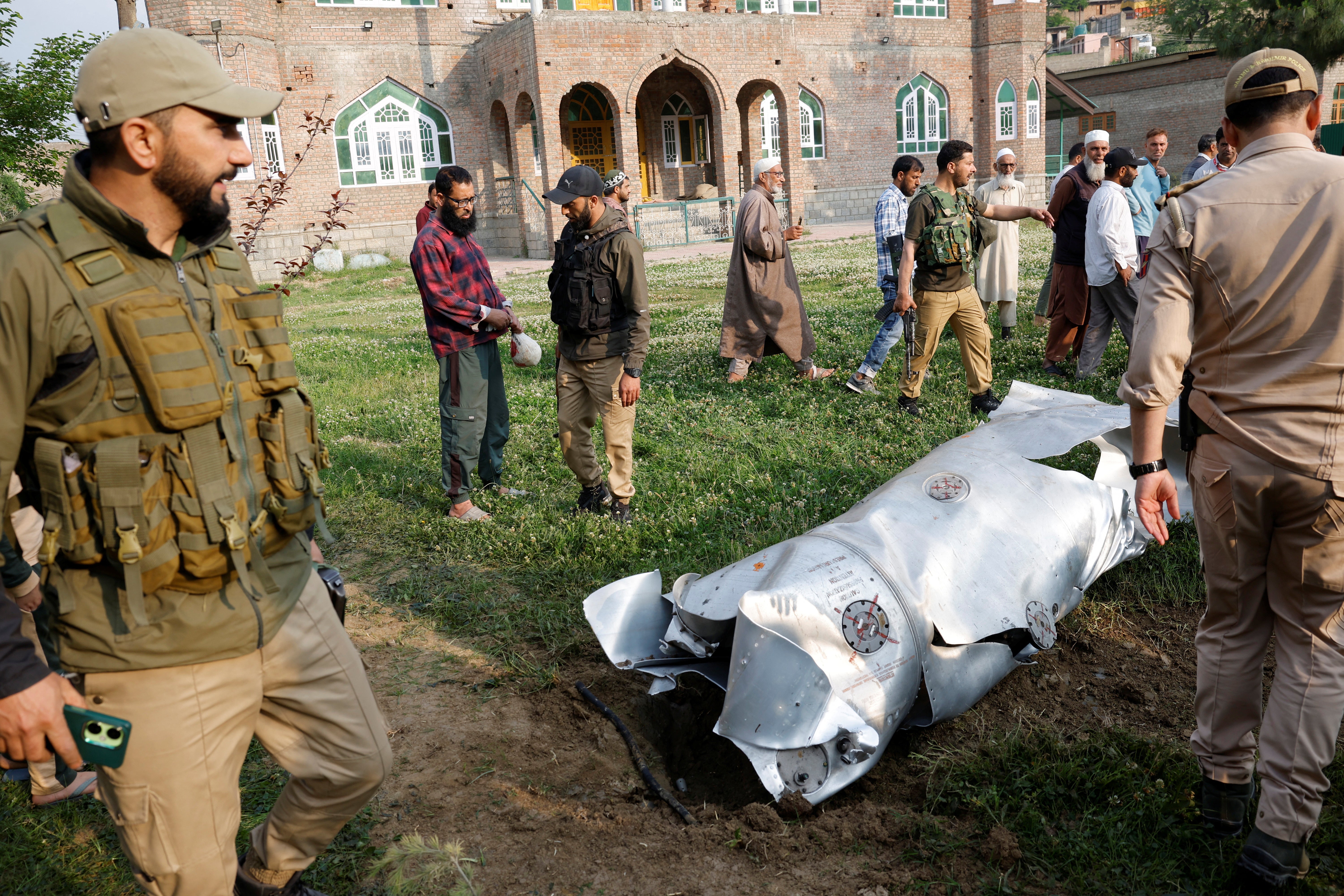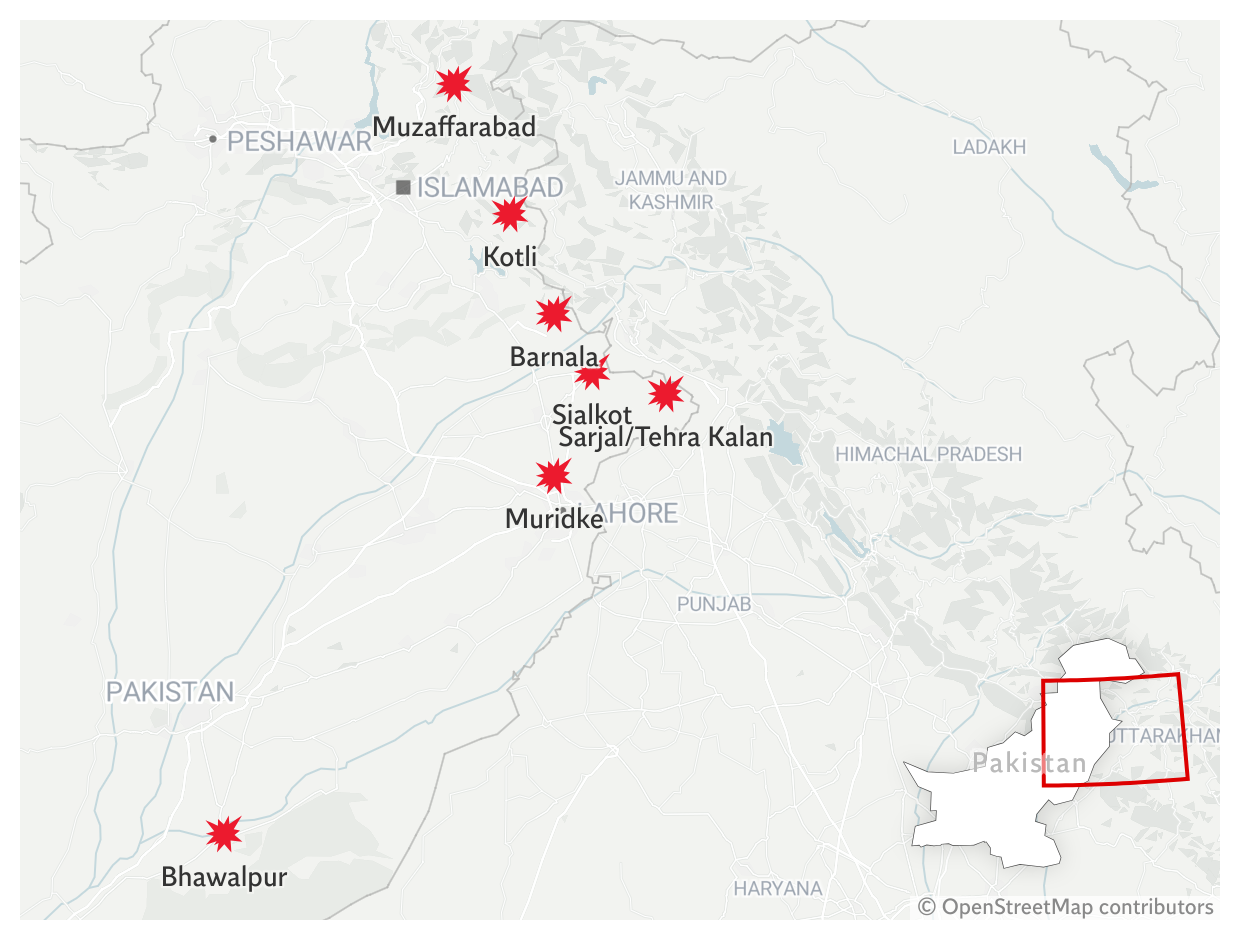ARTICLE AD BOX
As the rest of the world urges calm, India and Pakistan are once again teetering on the edge of full-blown conflict amid their most serious military escalation in decades.
India said its air force struck nine sites inside Pakistan and Pakistan-administered Kashmir in a pre-dawn raid early on Wednesday, claiming its “Operation Sindoor” targeted terrorist camps and infrastructure. Pakistan says at least 26 people, including women and children, were killed, despite Indian officials insisting there were no civilian casualties.
Pakistan shot down several Indian aircraft during the strikes, at least three of which came down on the Indian side of the de facto border. The question now is whether that – as well as heavy shelling in Kashmir that Indian police say has killed at least 10 civilians – will be deemed enough of a response.
Pakistani prime minister Shehbaz Sharif said Wednesday morning that Islamabad has every right to respond to the “act of war” and the entire nation stands with the Pakistani forces, whose morale and spirits are high. “Pakistan has every right to give a robust response to this act of war imposed by India, and a strong response is indeed being given,” Mr Sharif said.
Analysts say the question is not whether Pakistan will retaliate to the Indian strikes, but how powerful the response will be.
The Himalayan region of Kashmir is at the heart of decades of hostilities between India and Pakistan which both claim the Muslim majority region in whole but control it only in part. The two countries have fought two of their three full-scale wars since independence over the region.
New Delhi has long accused its neighbour of harbouring and backing groups waging an active militant insurgency in the Indian-administered side of Kashmir. It says it has evidence Pakistan was involved in the 22 April terror attack on Pahalgam in Kashmir where 26 people were killed, most of them tourists. Islamabad has rejected the allegations and called for an independent investigation.

“Pakistan has a history of swift counterattacks – it’s something we’re taught in army training as well. So, a retaliation is not a question of 'if' but 'when'. Pakistan will have to respond to satisfy its domestic audience. Not doing so would invite criticism for both the Shehbaz Sharif government and the Pakistan Army,” retired Lt Col JS Sodhi told The Independent.
“Pakistan will avoid targeting any major military installation in India, as that would be seen as an act of war. Instead, we can expect them to strike civilian infrastructure or bombing at border areas which could cause civilian casualties, a move intended to send a message without provoking full-scale war.”
The army veteran said Pakistan is likely to limit its retaliation to a less lethal blow to avoid escalation, noting that China – a vital ally to Islamabad – has already urged calm and has a vested interest in keeping tensions between India and Pakistan under control.
Responding to the Indian strikes, the Chinese foreign ministry said the Xi Jinping government finds "India’s military operation early this morning regrettable”.
“China opposes all forms of terrorism. We urge both sides to act in the larger interest of peace and stability, remain calm, exercise restraint and refrain from taking actions that may further complicate the situation," a spokesperson added.
Lt Col Sodhi said China’s influence over Pakistan would be a key factor in deescalation, arguing that Beijing has no interest in a major conflict on its western flank while it pursues its own interests to the east.
“China would not allow Pakistan to escalate it into a full-fledged war as its number one target is Taiwan,” he said.

India has previously used targeted airstrikes across the Line of Control (LoC) as retaliation for major militant attacks – notably in 2016 and 2019 – which makes the recent strikes part of an emerging pattern in India's military doctrine. The last military escalation saw a brief but fierce dogfight between a Pakistan Air Force pilot and an Indian Air Force pilot which ended with Pakistan capturing Wing Commander Abhinandan Varthaman after his fighter jet was shot down. The pilot was eventually returned to India, helping to bring tensions back under control.
But the stakes now appear higher, as well as the danger of a pattern of escalation between the two nuclear-armed neighbours. South Asia analyst Michael Kugelman warned that the current tit-for-tat dynamic is “higher up the escalatory ladder” than in past confrontations.

Mr Kugelman, an American foreign policy author and expert specialising in South Asia, said Wednesday morning’s strike was one of the most intense in years, and that Pakistan’s response would “surely pack a punch as well”.
“These are two strong militaries that, even with nuclear weapons as a deterrent, are not afraid to deploy sizeable levels of conventional military force against each other,” Mr Kugelman told the Associated Press.
“The escalation risks are real. And they could well increase, and quickly.”
While Wednesday’s events mirror those of 2019 in many ways, there are concerns that both sides could be willing to push their conventional military activity further this time around.
“Decision makers in both states now have a higher risk appetite for conflict initiation and escalation than prior to 2019,” said Frank O'Donnell, a non-resident fellow at the South Asia Program at the Stimson Center, a think-tank in Washington, as they had managed then to clash without nuclear weapons being used.
“But without a clear mutual sense of the precise actions, that could trigger inadvertent escalation,” he added.
“Each side will think they are in a better position than last time,” said Muhammad Faisal, a South Asia security researcher based at the University of Technology, Sydney. “It is only when we see actual combat that we will find out.”









 English (US) ·
English (US) ·